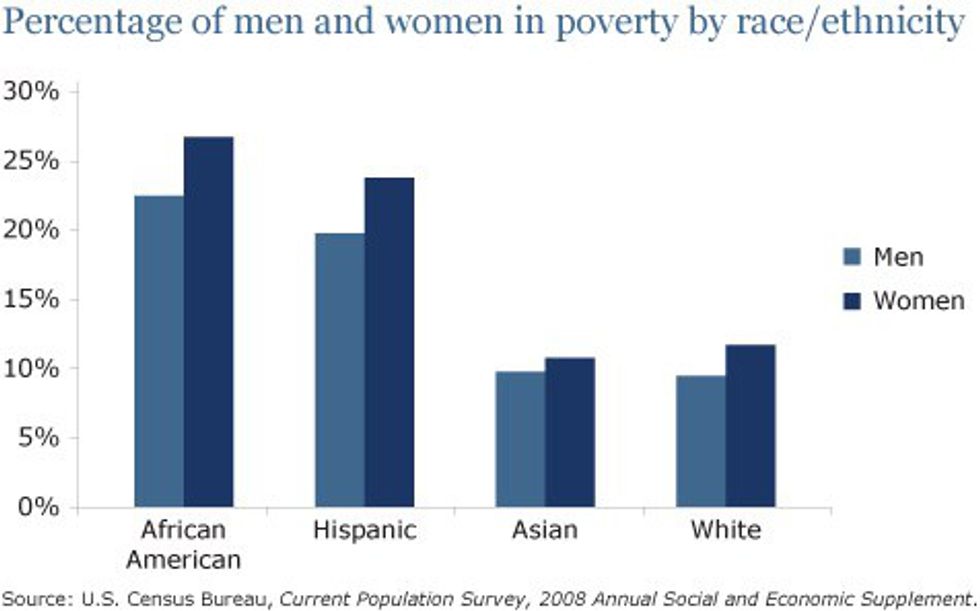We know that poverty is running rampant in the United States, whether it impacts us directly or not, or whether it is even visible to us. But did you know that it affects more women than men?
Women in America are more likely to become poor than men. Out of the almost 50 million Americans living in poverty today, 37 million of those are women. And unbelievably, the gap in poverty rates between men and women is wider in America than anywhere else in the Western world.
But this poverty crisis doesn’t just affect only white, American women, it affects women of all ethnic groups and races. And contrary to popular belief, only a quarter of all adult women with incomes below the poverty line are single mothers.
But why is this the case?
For starters, women are paid less than men, even when they have the same qualifications and work the same hours. Women are paid 77 cents to every dollar that men make. Women are segregated into low-paying occupations, and occupations dominated by women are low paid. Many are forced into “pink-collar” jobs such as teaching, child care, nursing, cleaning, and waitressing. Women are also more likely to provide unpaid caregiving to children and elderly family members.
So what can we do?
The gender wage gap has narrowed over the past 30 years due to an increase in better paying jobs and education. But in order to end this wage gap, women must receive the pay they deserve and equal work conditions. They must have access to higher paying jobs, they must have affordable child and elder care, as well as quality flexible work and paid family leave.
The best policy solutions will combine a decent range of employment opportunities with a network of social services that support healthy families. They must also recognize the multiple barriers to economic security women face based on race, ethnicity, immigration status, sexualality, physical ability, and health status. All in all, they must promote equal social and economic status of all women by expanding opportunities to balance work and family life.
Source: "Wider Opportunities for Women," unpublished analysis of Bureau of Labor Statistics data for 2007.




















